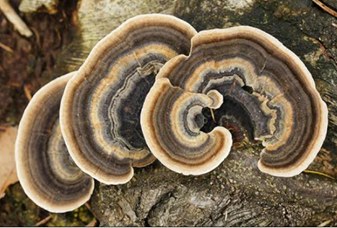

Context
Scientists discovered the fungus, growing on dead plants, causes pyrene degradation using special enzymes.
About
- Researchers at the Council of Scientific & Industrial Research-Indian Institute of Petroleum (CSIR-IIP), Dehradun, have identified a fungus capable of removing toxic, recalcitrant, and carcinogenic polycyclic aromatic hydrocarbons (PAHs) from the environment.
- The rapid pace of economic development and industrialisation has resulted in the release of several PAHs into the environment.
- The PAHs are ubiquitous environmental pollutants originating from multiple sources, including combustion of petrogenic fossil fuels, and incomplete incineration of municipal wastes and biomass.
Polycyclic Aromatic Hydrocarbons (PAHs):
- Polycyclic aromatic hydrocarbons (PAHs) are a class of chemicals that occur naturally in coal, crude oil, and gasoline.
- They result from burning coal, oil, gas, wood, garbage, and tobacco.
- PAHs can bind to or form small particles in the air.
- High heat when cooking meat and other foods will form PAHs.
- Naphthalene is a manmade PAH used in the United States to make other chemicals and mothballs.
- Cigarette smoke contains many PAHs.
Pyrene:
- Pyrene, possessing four benzene rings, belongs to the highly toxic class of PAHs, with carcinogenic and mutagenic properties.
- It gets lodged into the environmental matrices like soil, water and atmosphere, resulting in widespread environmental pollution, necessitating adequate remediation of contaminated environmental matrices.
New fungus:
- A white-rot fungus Trametesmaxima IIPLC-32 has the potential to cause microbial degradation of pyrene.
- According to researchers, growing on dead plants, this fungus causes pyrene degradation using special enzymes.



